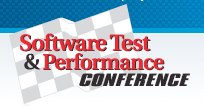A client recently asked me what blogs I read regularly. I pulled the list from my blog reader and here you go!
How Agile Benefits the Individual
A recent discussion on the ScrumDevelopment list shed light on the ways in which agile development practices directly benefit the individuals involved. The consensus was that an environment ideal for individual growth can be created by the implementation of agile practices such as inspect-and-adapt, pair programming, test driven development, and constant collaboration and communication. I found the discussion interesting, and so I wrote about it for InfoQ.
Cheers,
Brian Marick: What’s Missing From the Agile Manifesto
In his keynote at the Agile Development Practices conference, Brian Marick described values missing from the Agile Manifesto. His view is that the Manifesto was essentially a marketing document, aimed at getting business to give agile a chance. Now that this goal has largely been achieved, an extended set of guiding values are needed to help teams deliver on the promises of the manifesto. I found his thoughts interesting and compelling, so I wrote about them for InfoQ. You can read the full article here.
Cheers,
Chris
James Shore: The Decline and Fall of Agile
My friend James Shore has declared agile to be in decline. He cites the many teams doing ‘sprints’ and stand-up meetings, without adopting any of the technical practices necessary to produce high-quality software over the long-haul. In his estimation, this has led to thousands of Scrum teams doing agile so poorly that they will almost certainly fail, and possibly take the agile movement with them.
I found the article interesting, and so I wrote this article about it on InfoQ.
Cheers,
Addressing Nonfunctional Requirements in Scrum
Nonfunctional requirements describe qualities of a system (what it is) rather than its behaviors (what it does). Scott Ambler inspired much discussion when he recently asserted "Scrum’s product backlog concept works well for simple functional requirements, but… it comes up short for nonfunctional requirements and architectural constraints." in an article on Dr. Dobb’s Portal.
I reported on this for InfoQ, and you can read it here.
Cheers,
What Makes Agile Projects Succeed? – Agile Open California
 I hosted the ever-popular ‘What makes agile projects succeed?’ session at Agile Open California this year. As was the case last year, turnout was strong and the lessons learned from many teams were shared in a short period of time. In under 90 minutes the group generated and ranked a list of nearly 40 factors that had been key to the success of agile projects that they had been involved with. We used the Group Wisdom Without Groupthink technique to accomplish this feat. The list below presents, in order, what the assembled group considered to be the most important ingredients to the success of the agile projects.
I hosted the ever-popular ‘What makes agile projects succeed?’ session at Agile Open California this year. As was the case last year, turnout was strong and the lessons learned from many teams were shared in a short period of time. In under 90 minutes the group generated and ranked a list of nearly 40 factors that had been key to the success of agile projects that they had been involved with. We used the Group Wisdom Without Groupthink technique to accomplish this feat. The list below presents, in order, what the assembled group considered to be the most important ingredients to the success of the agile projects.
Not a Bad Morning
I woke up this morning with a 30th-story view of the Charles River. I finished up my latest article for InfoQ. Off I walked to get checked in for SD Best Practices, where I’ll be doing workshops on active listening and giving feedback. I reconnected with friends I made in Chicago, at Dr. Dobbs Architecture and Design World. Then there was just enough time to reconnect with Joel Spolsky, over a cup of coffee at Espresso Royal, before we had to run back to the conference so that he could deliver the lunch keynote. His presentation got plenty of hearty laughs, while making some serious points about how to make people love your software.
Life is good!
Cheers,
The Power of Done
It seems so simple, but having a well, and widely, understood definition of “done” is one of the most powerful contributors towards the success of an agile project. Lately there has been a lot of discussion about this idea, and it prompted me to write this story for InfoQ.
What is your team’s definition of “done”? Leave a comment and share it!
Cheers,
The Makings of a QA Leader at ST&P Conference
 This post contains the results from the second of two sessions that I facilitated at the Software Test and Performance Conference in Boston. This session was held in the largest of the available rooms, and it we nearly filled it.
This post contains the results from the second of two sessions that I facilitated at the Software Test and Performance Conference in Boston. This session was held in the largest of the available rooms, and it we nearly filled it.
Read the full article…
The Most Effective Ways to Improve Software Quality at ST&P Conference
 Software Test and Performance Conference in Boston, a group of a bout twenty software quality professionals gathered to consider the most basic and practical question of the conference: What are the things that we can do that make the biggest improvements in the quality of our software?
Software Test and Performance Conference in Boston, a group of a bout twenty software quality professionals gathered to consider the most basic and practical question of the conference: What are the things that we can do that make the biggest improvements in the quality of our software?
